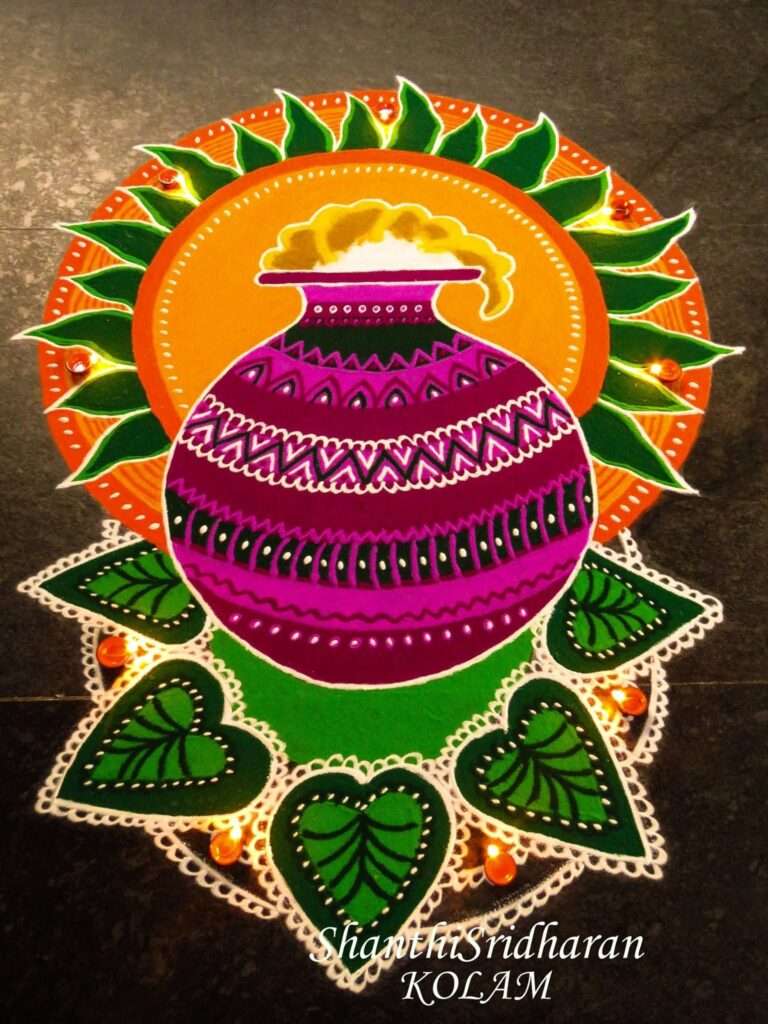10 Mesmerizing Rangoli Designs That Will Leave You Speechless
1. Introduction to Rangoli Designs
Rangoli, also known as Kolam or Muggu, is a traditional Indian art form that involves creating intricate patterns on the floor. There is a widespread belief that it carries blessings and abundance to the residence.
Rangoli designs are made using various materials such as colored powders, rice, flowers, and even colored sand.
2. The Significance of Rangoli in Indian Culture
Rangoli holds immense cultural significance in India. It is considered a form of artistic expression and is often created during festivals, weddings, and other auspicious occasions. Rangoli designs are believed to welcome the deities and bring positive energy into the home.
3. Materials Used for Creating Rangoli Designs
Creating a rangoli design requires specific materials. Traditionally, colored powders made from natural substances like turmeric, vermillion, and rice flour were used. However, nowadays, synthetic colors are also commonly used. Other materials such as flowers, petals, and diyas (earthen lamps) are often incorporated to add an extra charm to the designs.
4. Traditional Rangoli Designs

4.1 Floral Rangoli
Floral rangoli desig ns are immensely popular and are created using vibrant flower petals. Marigold, rose, and jasmine flowers are commonly used to form intricate patterns and motifs.

4.2 Diya Rangoli
Diya rangoli desig ns incorporate earthen lamps (diyas) into the rangoli pattern. The diyas are placed strategically, creating a stunning interplay of light and color.
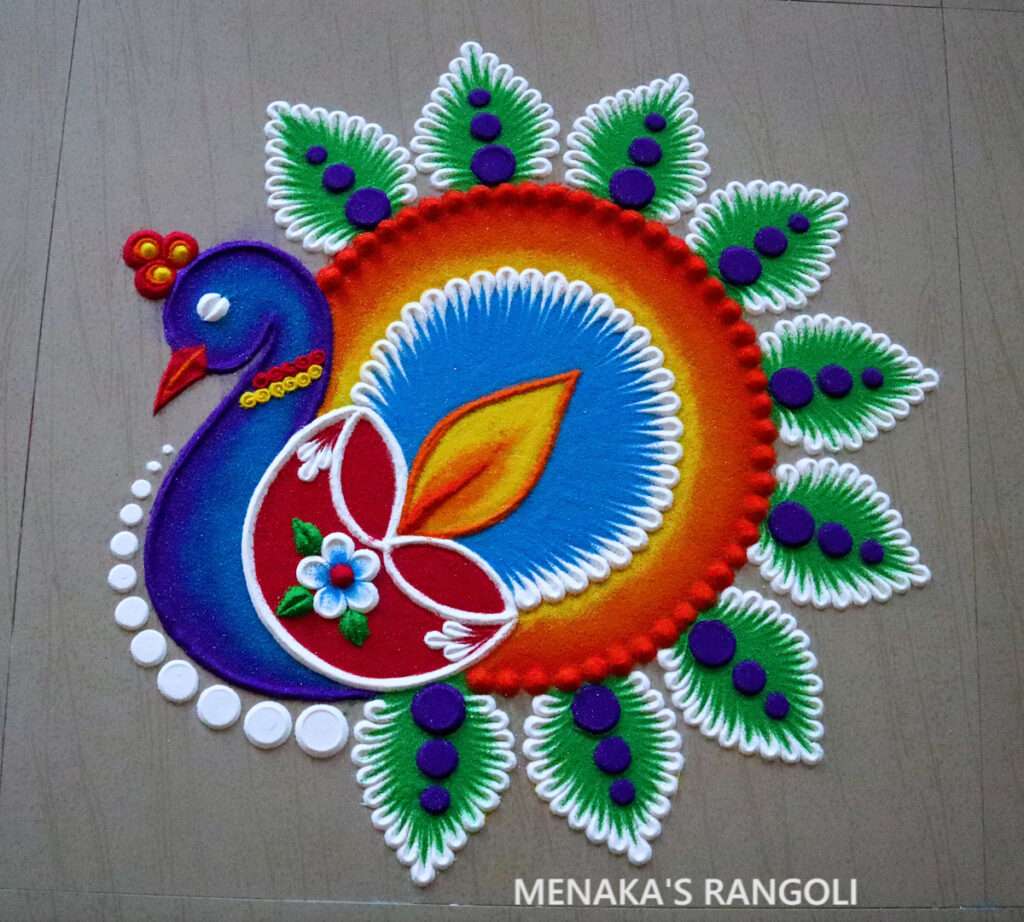
4.3 Peacock Rangoli
Peacock rangoli desig ns depict the majestic peacock, a symbol of beauty and grace. These designs often feature intricate feather patterns and vibrant colors.
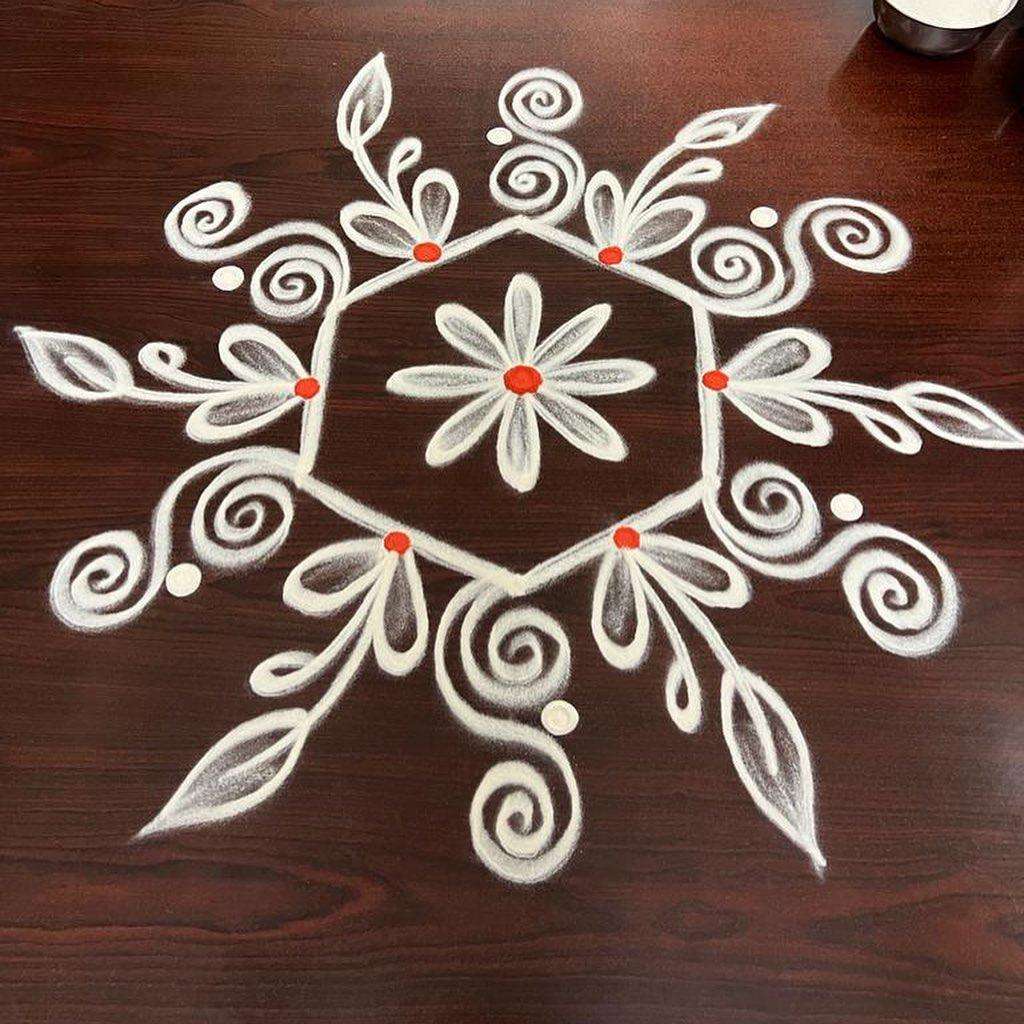
4.4 Kolam Rangoli
Kolam rangoli desig ns are popular in South India. They are characterized by geometric patterns created using rice flour. Kolam rangolis are believed to bring good luck and ward off evil.
5. Contemporary Rangoli Designs
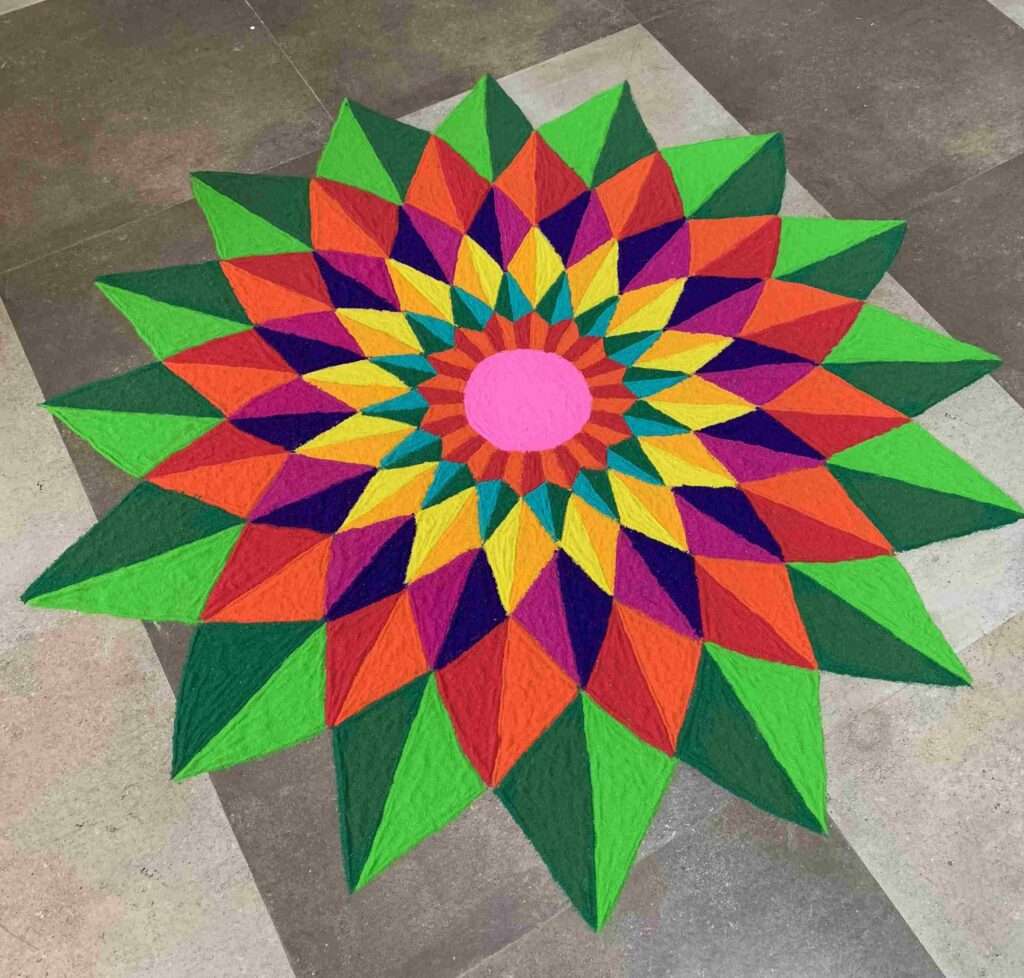
5.1 Geometric Rangoli
Geometric rangoli desig ns showcase intricate geometric shapes and patterns. These designs add a modern touch to traditional rangoli art.
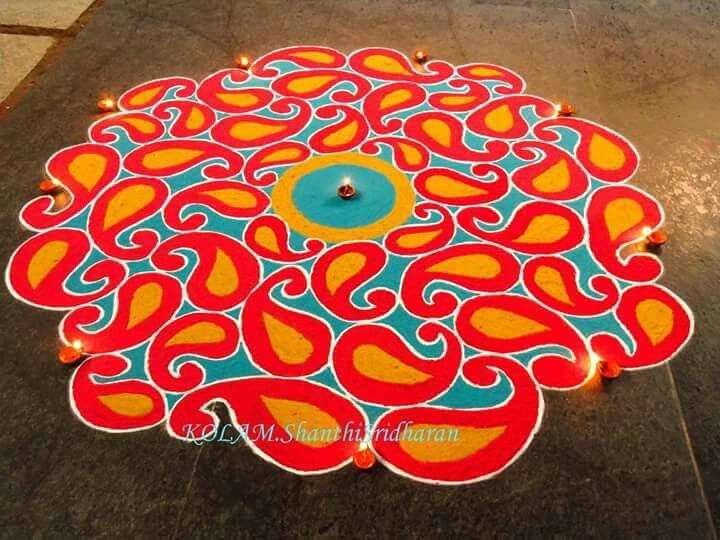
5.2 Abstract Rangoli
Abstract rangoli desig ns allow for creative expression with free-flowing lines and shapes. These desig ns are visually captivating and can be customized as per individual preferences.
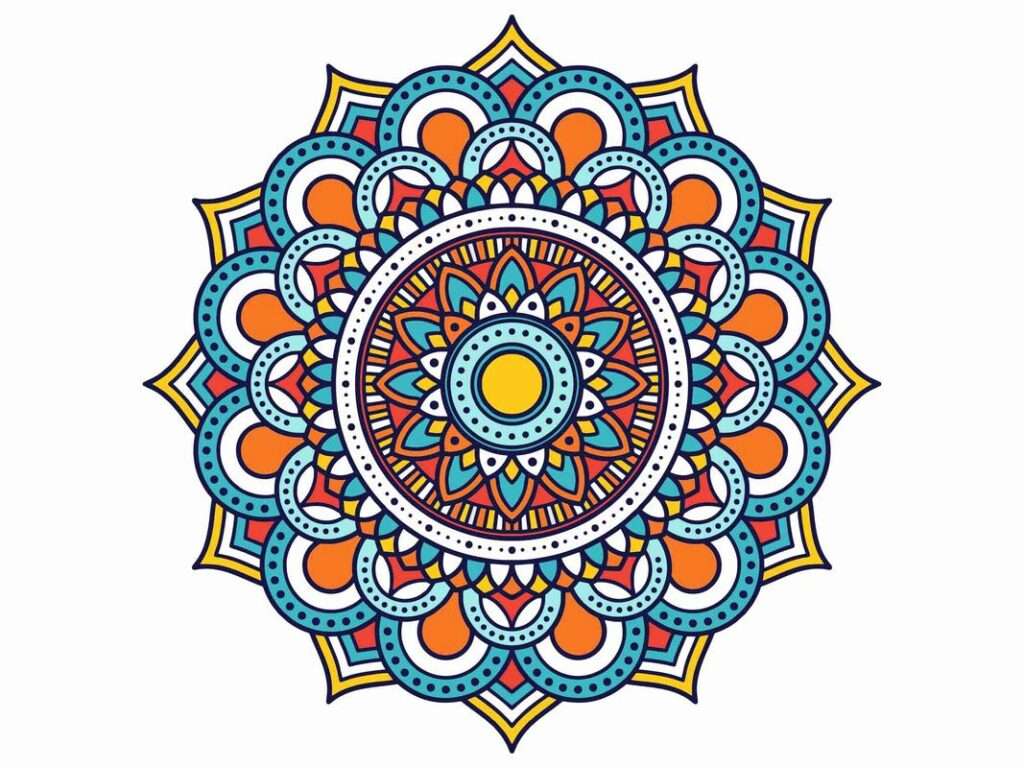
5.3 Mandala Rangoli
Mandala rangoli designs are inspired by the ancient art form of mandalas. They feature intricate circular patterns and are often associated with spiritual and meditative practices.

5.4 Theme-based Rangoli
Theme-based rangoli desig ns revolve around a particular concept or theme. They can be based on nature, mythology, festivals, or any other subject, allowing for storytelling through the art form.
6. Tips for Creating Mesmerizing Rangoli Designs
Plan the desig n before starting.
Start with a simple outline and gradually add details.
Use contrasting colors to make the desig n visually appealing.
Incorporate elements like diyas or flowers for an extra touch.
Practice regularly to improve your skills.
7. Rangoli Designs for Festivals and Occasions

7.1 Diwali Rangoli Designs
Diwali, the festival of lights, is incomplete without vibrant rangoli desig ns adorning the entrances of homes. Diwali rangoli desig ns often feature diya patterns, lamps, and auspicious symbols.

7.2 Wedding Rangoli Designs
Wedding rangoli desig ns are grand and intricate, symbolizing prosperity and happiness. These designs often incorporate elements like lotus flowers, peacocks, and traditional wedding motifs.
7.3 Pongal Rangoli Desig ns
Pongal, a harvest festival celebrated in South India, is marked by the creation of beautiful rangoli designs using rice flour. Pongal rangolis often depict sugarcane, sun, and traditional agricultural symbols.
8. Rangoli Competitions and Contests
Rangoli competitions and contests are held in various parts of India, where participants showcase their creativity and skills. These events promote the art form and provide a platform for rangoli enthusiasts to come together and celebrate their talent.
9. The Role of Rangoli in Promoting Art and Creativity
Rangoli serves as a platform for artistic expression, fostering creativity and imagination. It encourages individuals to explore their artistic abilities and provides an avenue for cultural preservation and appreciation.
10. Conclusion
Rangoli desig ns are a visual treat, blending colors, patterns, and cultural symbolism. From traditional floral rangolis to contemporary geometric designs, the art form continues to evolve while retaining its essence. By incorporating rangoli into our lives, we embrace a vibrant and creative tradition that celebrates beauty and harmony.
FAQs (Frequently Asked Questions)
What is the origin of rangoli designs?
Rangoli desig ns have their roots in ancient Indian art forms and have been passed down through generations.
Can I create a rangoli design without using colors?
Yes, you can create rangoli desig ns using materials like rice flour, flowers, or even colored sand.
Are there any specific occasions when rangoli designs are created?
Rangoli desig ns are commonly created during festivals, weddings, and auspicious occasions in India.
Do I need special artistic skills to create rangoli desig ns?
While artistic skills can be beneficial, rangoli desig ns can be created by anyone with practice and a bit of creativity.
Where can I learn more about rangoli desig ns and their techniques?
You can explore online resources, books, or even join rangoli workshops to learn more about the art form.
Many More designs :- https://rkpedia.com/design/

